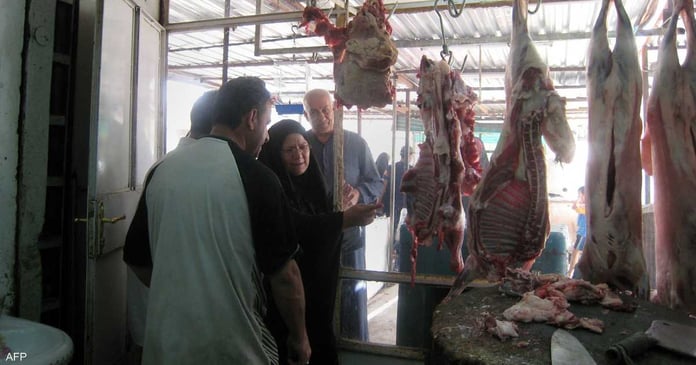In details revealed by Health Ministry spokesman Saif Al-Badr to the Iraqi News Agency, “the ministry has registered since the beginning of this year 67 cases of hemorrhagic fever, including 10 deaths in all Iraq”.
According to the Iraqi official, Dhi Qar, in the south of the country, tops the Iraqi governorates with the number of injured and dead, followed by the governorates of Basra, Muthanna and Najaf.
According to Iraqi health care expert Jamal Muhammad, the frequency of hemorrhagic fever infections “increases at such a time, and this indicates that the causes and factors behind the spread of the disease in humans exist. unfortunately still and have not been properly addressed.”
Muhammad pointed to the main reasons for the spread of the disease saying, “There is a phenomenon of indiscriminate slaughtering of cattle and non-respect of the places specified for it, as slaughtering operations take place even in the midst of residential areas and in public squares and streets of cities and towns, causing severe environmental pollution that contributes to the emergence of various epidemics and infectious diseases.” “.
He added: “Meat of unknown origin is sold at lower prices by street vendors, and it does not carry health stamps, as it is not subject to control and often carries diseases which expose its consumers at great risk, which necessitates severe sanctions against violators of the regulations and instructions of the sanitary and veterinary services.”
And he continued: “There is a need to intensify prevention campaigns and to raise awareness of the dangers of this deadly fever, the means of transmitting its infection and of avoiding it, and at the forefront of which is respect for the rules of public and personal hygiene and not to mingle with livestock in such epidemic conditions and to stay away from them, and above all not to buy meat before ensuring that it is fit for consumption and free from of diseases.” From trusted retail outlets that follow public health requirements.
What is hemorrhagic fever and its symptoms?
This viral fever is usually transmitted from infected animals to humans, through contaminated blood and meat, and due to the lack of surveillance and the weakness of sanitary precautions and preventive controls in the work of butcher shops, and the slaughter of sick animals without examination or control. Although the virus dies if infected meat contaminated with the virus is properly cooked, it can even be transmitted through the blood of infected animals. Experts warn that the virus can also be transmitted from person to person, including through sexual contact, or through saliva and various bodily fluids. The first symptoms of the disease include fever, fatigue, weakness or general malaise, dizziness, muscle, bone or joint pain, nausea, vomiting and diarrhea. Symptoms that can be life-threatening include bleeding under the skin, internal organs, mouth, eyes or ears, nervous system dysfunction, coma, delirium, kidney, respiratory and liver failure.
Routes of infection
Viral hemorrhagic fevers are spread through contact with animals. The viruses that cause hemorrhagic fever live in many animal and insect hosts, and they mainly include mosquitoes, ticks, rodents or bats. Some types of viral hemorrhagic fevers are transmitted by mosquito or tick bites, and others are transmitted by contact with an infected person’s fluids. If you’re traveling to an area where certain hemorrhagic fevers are common, you can become infected without showing symptoms until you return to your home country, and it can take anywhere from two to 21 days for symptoms to appear, depending on the type. of viruses.
Disease prevention methods
If you live, work, or travel to areas where this disease is common, protect yourself from infection by using appropriate protective measures when handling blood or body fluids, such as wearing gloves and eye protection. eyes and face.
Precautions also include caution when handling, disinfecting, and disposing of laboratory specimens and waste.
Although there is no specific treatment for most types of viral hemorrhagic fevers, ribavirin and verazole can help shorten the course of some infections and prevent complications in some cases.
Read the Latest World News Today on The Eastern Herald.


